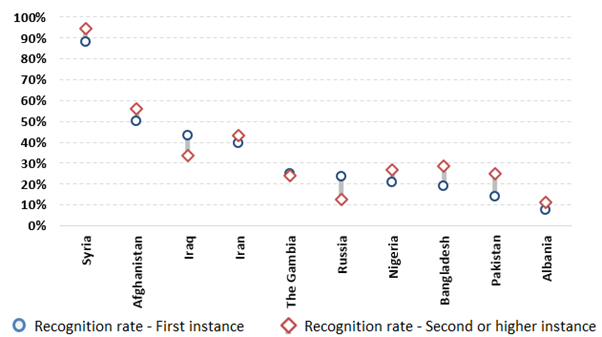The fact that a considerable proportion of final decisions were positive was reflected in the recognition rates for applicants from several countries of origin, at both higher and lower recognition rates. In 2018, seven out of the ten citizenships with most final decisions received a higher proportion of positive decisions at final rather than in first instance, a noticeable development (Figure 22). The largest discrepancies concerned applicants from Pakistan (25 %, + 11 percentage points), Bangladesh (28 %, + 9 p.p.), Syria (94 %, + 6 p.p.), Afghanistan (56 %, + 6 p.p.) and Nigeria (27 %, + 6 p.p.). For all these citizenships, with the exception of Syrians, most positive final decisions granted humanitarian protection.
|
Recognition rates in first instance (blue) and second/higher instance (red) for selected citizenships |
 |
|
Figure 22: For several citizenships, the recognition rate was higher for final |
